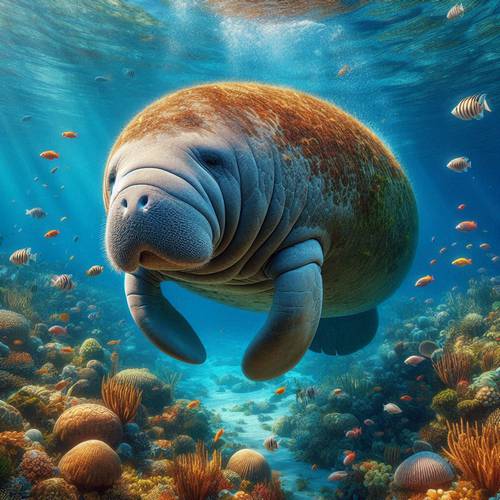Sea Grasses and Their Importance
What does a manatee eat?
- Seagrasses
- Shoal grass
- Algae
- Freshwater Vegetation
- Water hyacinth
- Hydrilla
- Water lettuce
- Pennywort
- Mangrove Leaves
- Water celery
- Duckweed
- Eelgrass
When it comes to their diet, sea grasses play a crucial role in sustaining these gentle marine creatures. Manatees, often referred to as sea cows, primarily feast on various types of sea grasses, forming the cornerstone of their nutritional intake. Sea grasses provide essential nutrients and energy, promoting the overall well-being of manatees.
These marine mammals exhibit a discerning preference for certain sea grass varieties, showcasing a fascinating aspect of their feeding behavior. The importance of sea grasses in the manatee diet extends beyond individual sustenance, contributing to the broader ecological balance of underwater habitats.
Understanding the significance of these underwater meadows is vital for conservation efforts aimed at protecting manatees and their unique feeding environments.
- Seagrasses
- Shoal grass
- Algae
- Freshwater Vegetation
- Water hyacinth
- Hydrilla
- Water lettuce
- Pennywort
- Mangrove Leaves
- Water celery
- Duckweed
- Eelgrass
When it comes to their diet, sea grasses play a crucial role in sustaining these gentle marine creatures. Manatees, often referred to as sea cows, primarily feast on various types of sea grasses, forming the cornerstone of their nutritional intake. Sea grasses provide essential nutrients and energy, promoting the overall well-being of manatees.
These marine mammals exhibit a discerning preference for certain sea grass varieties, showcasing a fascinating aspect of their feeding behavior. The importance of sea grasses in the manatee diet extends beyond individual sustenance, contributing to the broader ecological balance of underwater habitats.
Understanding the significance of these underwater meadows is vital for conservation efforts aimed at protecting manatees and their unique feeding environments.
Aquatic Plants in the Manatee Diet
Aquatic plants play a pivotal role in the manatee's diet, serving as a diverse and vital source of nutrition for these gentle marine herbivores. Manatees are known to consume various types of aquatic vegetation, ranging from seagrasses to freshwater plants. These plants provide essential nutrients crucial for their overall well-being.
The browsing behavior of manatees involves leisurely grazing on these underwater plants, showcasing a fascinating aspect of their feeding habits. Conservation efforts often focus on protecting these crucial habitats, recognizing the interconnected relationship between manatees and aquatic plant ecosystems.
The browsing behavior of manatees involves leisurely grazing on these underwater plants, showcasing a fascinating aspect of their feeding habits. Conservation efforts often focus on protecting these crucial habitats, recognizing the interconnected relationship between manatees and aquatic plant ecosystems.



